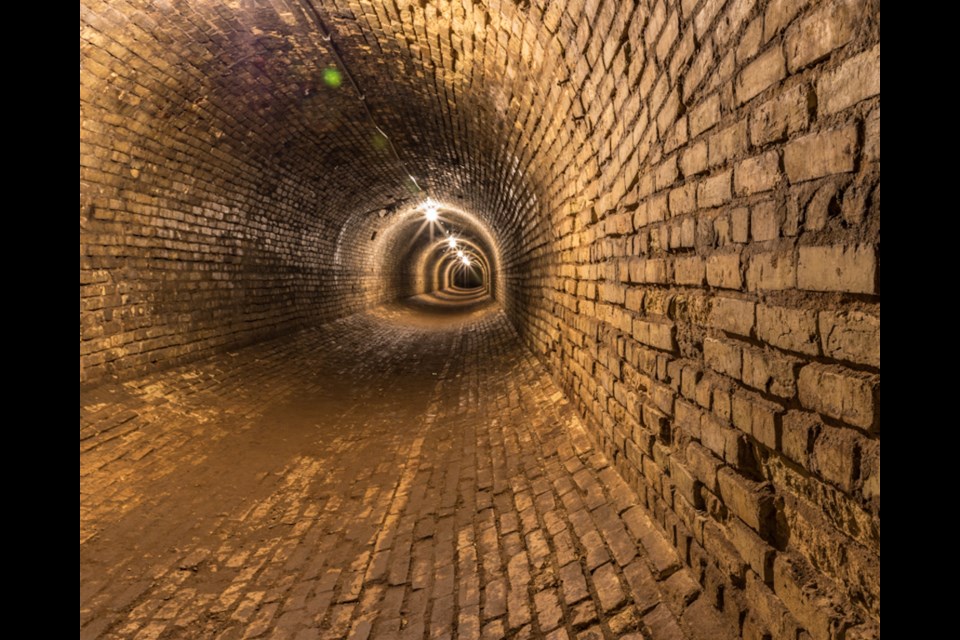"We shape our buildings; thereafter they shape us."
- Winston Churchill
PreservationWorks, an advocacy network committed to the preservation and adaptive reuse of the few remaining Kirkbride Asylum Buildings across the United States, hosted its 4th Annual PreservationWorks Benefit Photography Tour on Aug. 10 in Traverse City, Mich. at the Village at Grand Traverse Commons - formerly known as the Traverse City State Hospital.
Christian VanAntwerpen, president, creator and cofounder of PreservationWorks, led the tour with 34 in attendance from varying locations.
Three photographers from Sault Ste. Marie, Ont. took part. What better way to share the beauty and passion of preserving old buildings than through the lens?
Photography tours run frequently at the Village. Most of the standard tours (generally lasting two to three hours) are led by a hand-picked guide. VanAntwerpen leads the extended tours quarterly as well as the annual benefit tour. The benefit tour is a chance to introduce people to the organization and the funds raised go back into PreservationWorks.
The tour routes were developed in 2015 by VanAntwerpen of the newly formed PreservationWorks and Raymond Minervini of the Minervini Group tasked with the revitalization and rehabilitation of the block of buildings previously patient accommodation and treatment facilities - a portion of the original acreage housing the facility in its entirety.
PreservationWorks has a twelve person board overseeing its operations. They advocate for the preservation and redevelopment of the remaining Kirkbride Buildings for reuse.
Traverse City State Hospital, also known as the Northern Michigan Asylum or Traverse City Regional Psychiatric Hospital, is the last surviving Kirkbride Building of three built across Michigan and is both state and national historic site. It was built in 1885 and met it's final days in 1989.
The term "Kirkbride Building" was derived from the vision of Thomas Story Kirkbride (a psychiatrist from Philidalphia, PA) which was based on the healing of the mentally ill with air circulation and exposure to natural light. This meant that structurally they were designed with wings that spread outward from a central location, housing the most dangerous on the outer most end of the wings.
Dr. Kirkbride also believed that these locations should be located on fertile ground, and large in nature. The grounds of such were sometimes kept and worked as part of patient therapy and exercise where possible. The hospital was used in time of outbreak for treatment of infectious diseases including Polio, Typhoid, Tuberculosis, Influenza & Diptheria.
Building 50 was the first building in Traverse City. It was built in the Victorian Italianate Style based on Kirkbride's plan. Buildings in other locations were dependent on the individual architects appointed to each project.
In its hay day it was a full working farm with barns and animals and vegetable gardens worked by the patients. In addition it was totally self sufficient, housing its own power plant with steam tunnels. Workers lived either on campus or very close by.
Almost all the buildings that existed at the time of closure still exist. Many of the newer structures were removed to make room for the pavilions next to the village. The buildings served a multitude of purposes. The majority were patient housing.
The historic structures now serve as the multi-functional "Village at Grand Traverse Commons", the medical "Grand Traverse Pavilions" and the Munson Medical Center and additionally, the event-based Historic Barns as indicated by Christian VanAntwerpen.
Vast transformations have occurred with the exception of a few back buildings, The Male patient cottage buildings, and the power plant. The entire campus has been transformed into a cultural centre in Traverse City. This has been accomplished without compromising the historical importance of the structures themselves.
While there were a huge number of sad stories associated with the facilities, there were also an equal number of happy stories. However one chooses to look at it one thing is certain - It has created a lasting legacy for a community that has rallied around it.
